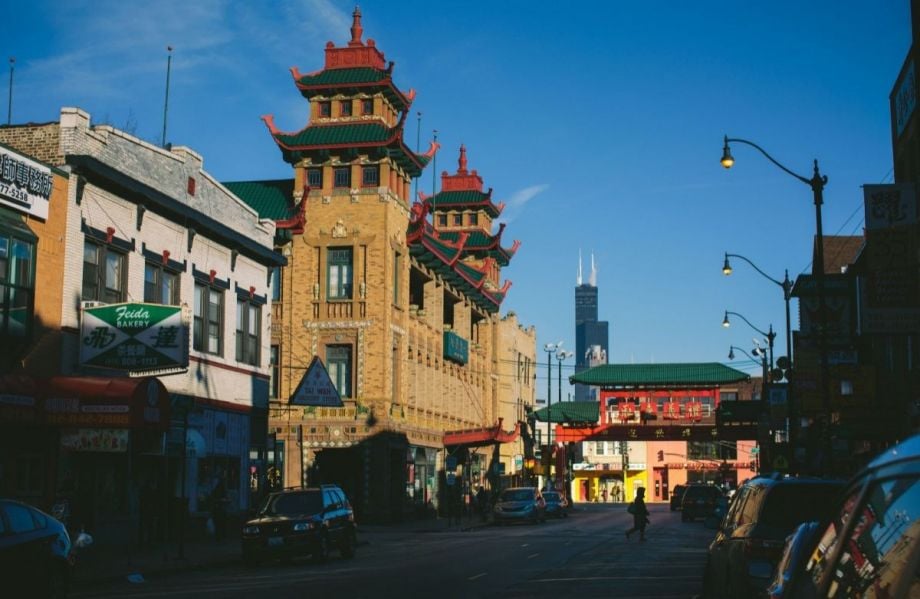A new map of Chicago’s Chinatown attempts to take a proactive approach to displacement concerns as the neighborhood sees a real estate market that’s heating up. It is the creation of a university-community partnership intended to bring visibility to existing cultural and commercial assets, and those who are organizing to maintain or improve them.
“Our goal is to look at how Chinatown has changed and how it continues to evolve,” Debbie Liu, a community development coordinator with the Coalition for a Better Chinese American Community, said in a statement. “Many people are surprised to learn about the expansive history and advocacy efforts that is making this Chinatown one of, if not the only, thriving Chinatowns in North America.”
The coalition has observed Chinatowns in other major U.S. cities wither. Chicago’s district, by contrast, is booming, as Anna Clark reported for Next City last year:
“Chicago Chinatown is the only one in the country that has not been gentrified and also has been expanding,” says [Esther] Wong, of the Chinese American Service League. And its development is orchestrated not only by leaders at the top of influential organizations, but also by the personal choices of people on the ground.
So far, Chicago Chinatown’s boom is one that has maintained a focus on creating a place for more Chinese and other East Asian immigrants to live, not just a tourist destination, Clark reported. Chinatown’s expansion is now reaching two historically working-class black and white neighborhoods on Chicago’s South Side, with little racial tension, the Chicago Tribune reported this year:
In these two neighborhoods, where residents pride themselves on their dedication to culture and their unwillingness to bend to gentrification, it would seem that the flow of Chinese families would be met with hesitation. Yet Chinese residents say they hardly feel alienated and cite few instances of racial tension.
But, could Chinatown’s own success help to fuel its cultural undoing? It’s close to The Loop, Chicago’s historic central business district, not unlike Chinatowns in NYC or San Francisco. It’s got its own stop on the Chicago El. If it becomes tagged as a “hot” neighborhood for newcomers, does it risk having its cultural identity and heritage swept away and replaced with — don’t say it too loudly — the “creative class”? As urbanist and author Richard Florida has been saying about the “New Urban Crisis”:
It became increasingly clear to me that the same clustering of talent and economic assets generates a lopsided, unequal urbanism in which a relative handful of superstar cities, and a few elite neighborhoods within them, benefit while many other places stagnate or fall behind. Ultimately, the very same force that drives the growth of our cities and economy broadly also generates the divides that separate us and the contradictions that hold us back.
The Coalition for a Better Chinese American Community, working in partnership with the School of Communication at Loyola University Chicago, wants to preempt loss of history and culture, even as the neighborhood changes. The map’s points of interest were gathered during a series of community-based focus groups with youth, seniors, community organizations and local ethnic media producers.
“It was important that our map build on spaces identified by the local Chinatown community and what they feel makes the neighborhood unique from their existing values,” George Villanueva, Loyola assistant professor of advocacy and social change, said in a statement.
The reverse side of the map highlights local advocacy campaigns to improve the neighborhood, resources to create equitable housing, local ethnic media outlets to better reach out to community, and pathways for citizens to become involved in creating a more sustainable Chinatown.
“Over the decades we were gratified to witness a heightened sense of belonging and identity among Chinatown community members as a result of their participation in collective advocacy efforts”, C.W. Chan, chairman of the Coalition for a Better Chinese American Community, said in a statement. “These collective actions not only produced tangible results in infrastructure and aesthetic improvements in Chinatown, but also led to sustainable growth toward a direction that benefits all community segments and generates civic pride.”

Oscar is Next City's senior economic justice correspondent. He previously served as Next City’s editor from 2018-2019, and was a Next City Equitable Cities Fellow from 2015-2016. Since 2011, Oscar has covered community development finance, community banking, impact investing, economic development, housing and more for media outlets such as Shelterforce, B Magazine, Impact Alpha and Fast Company.
Follow Oscar .(JavaScript must be enabled to view this email address)















